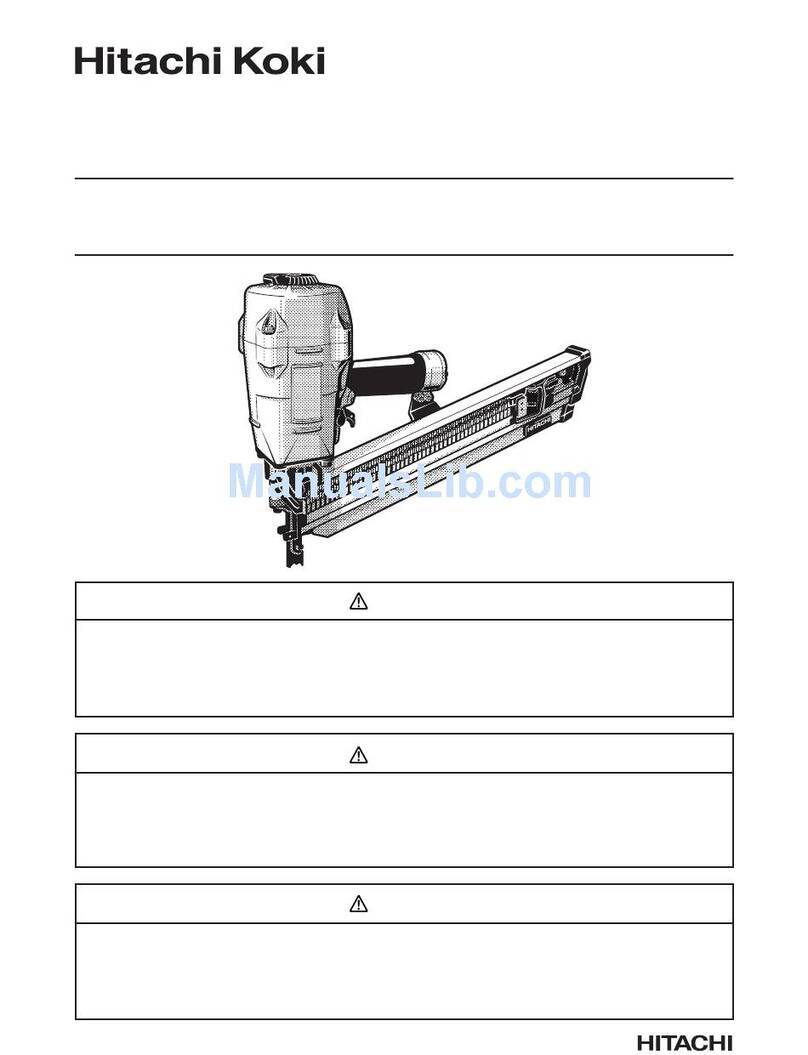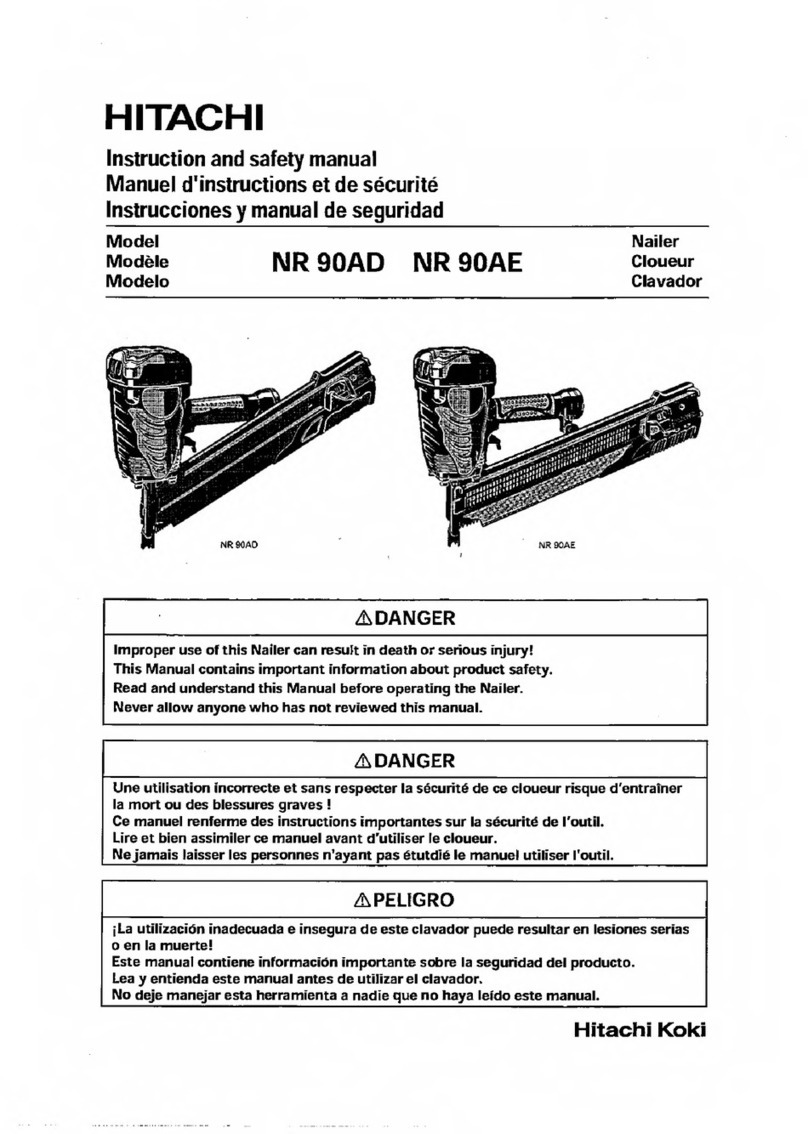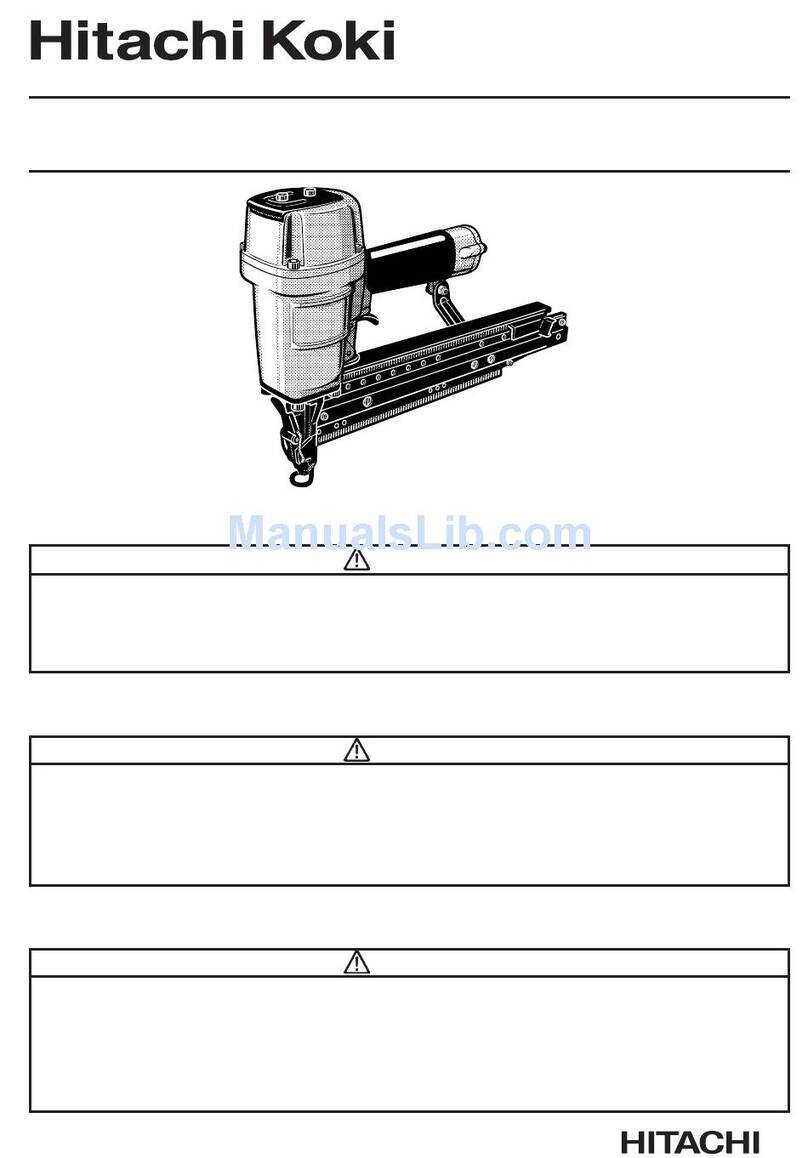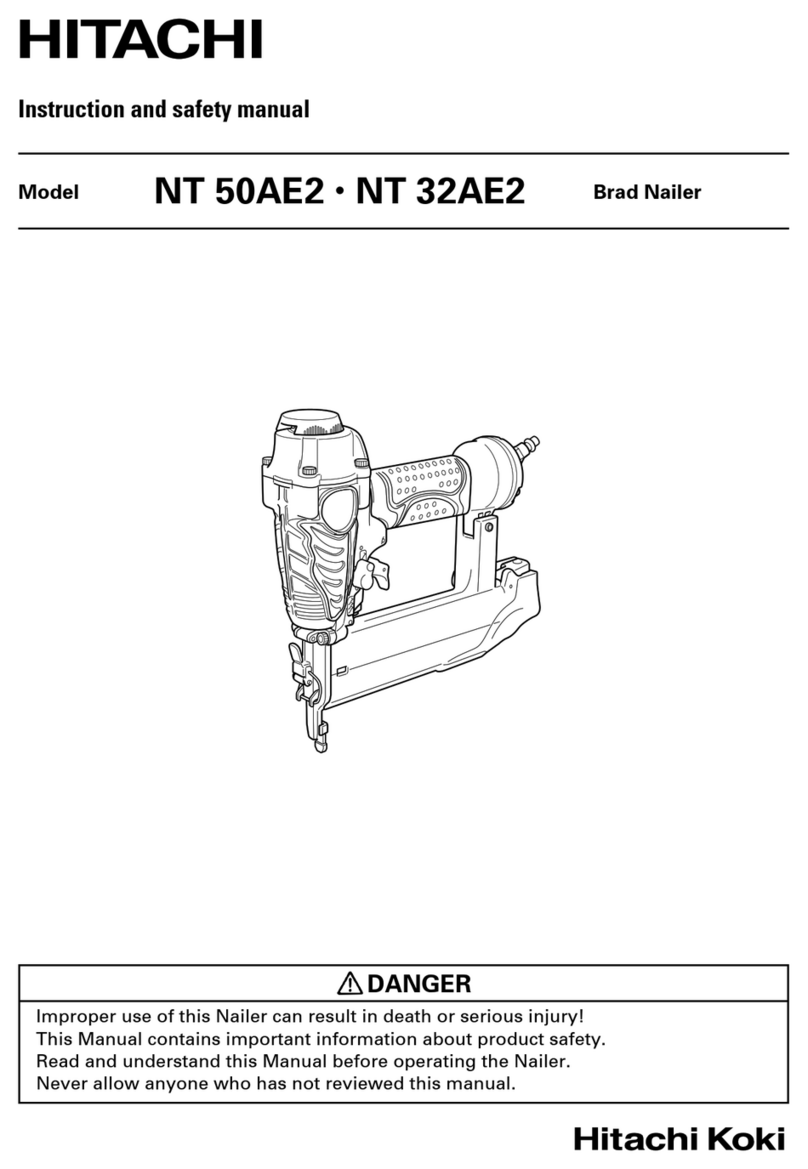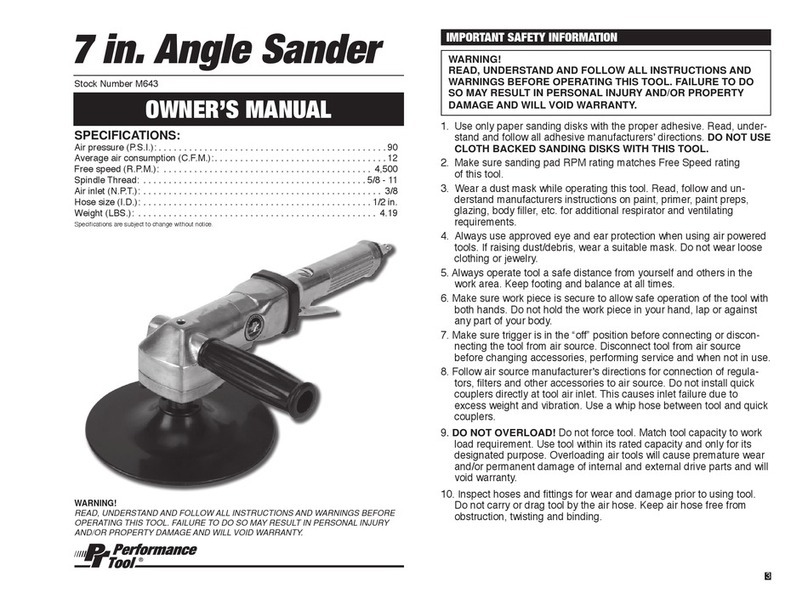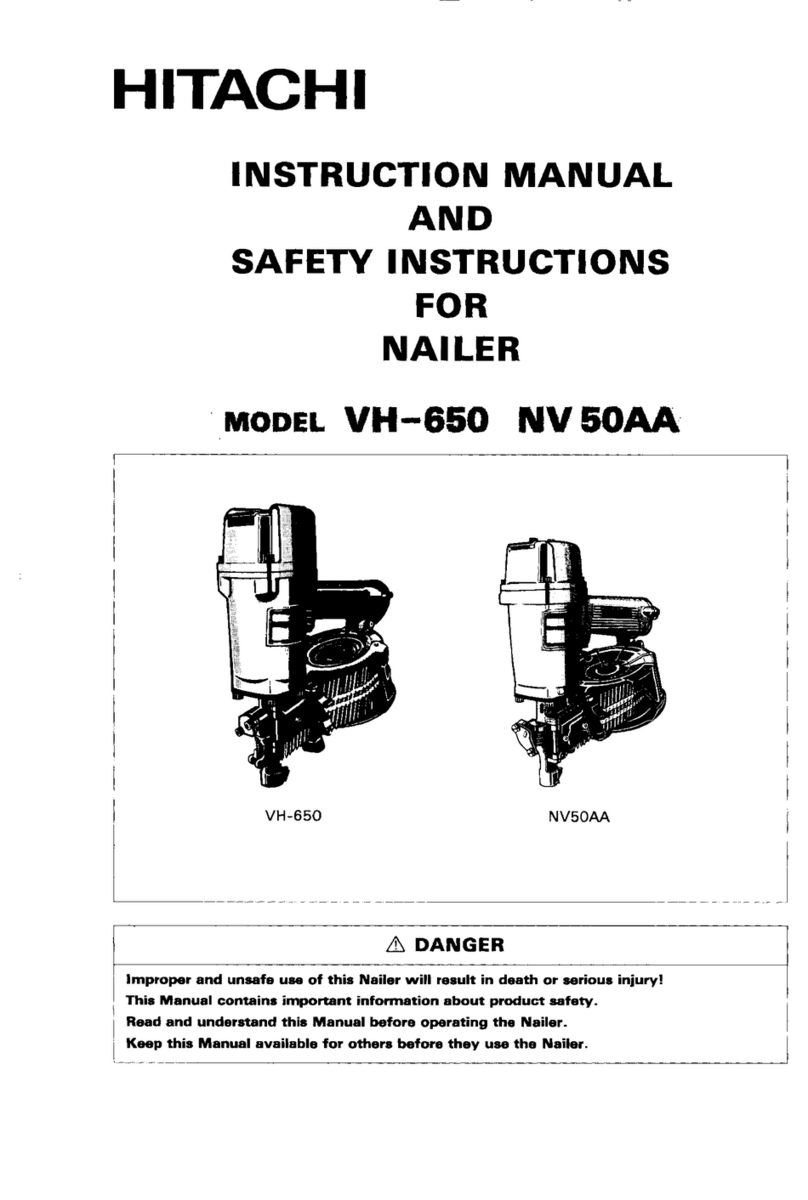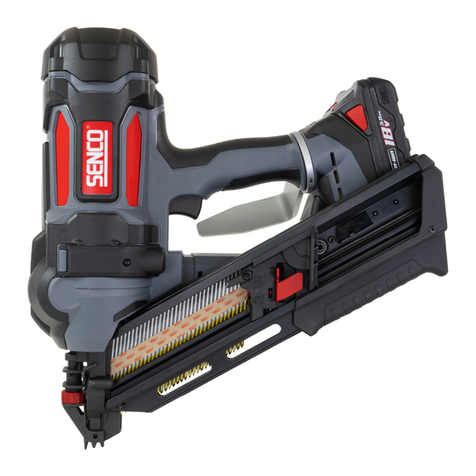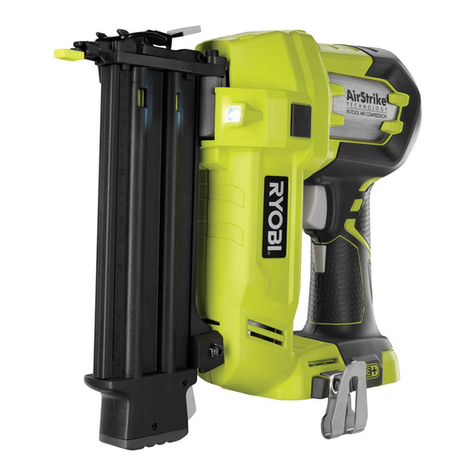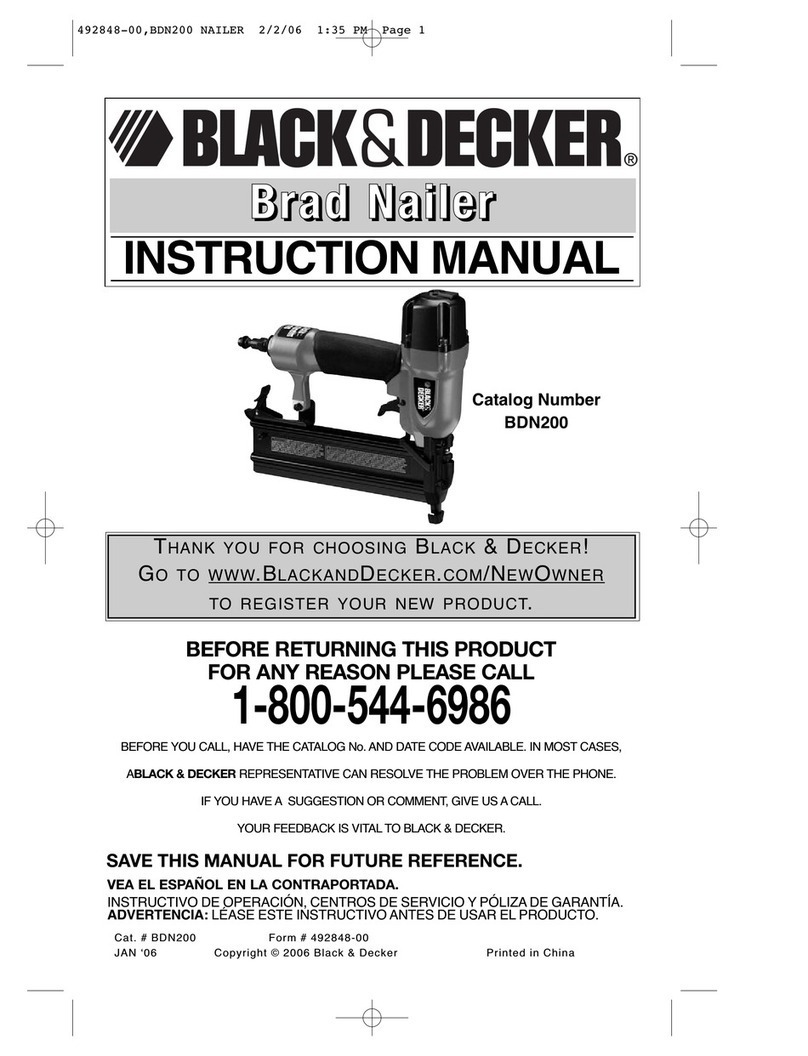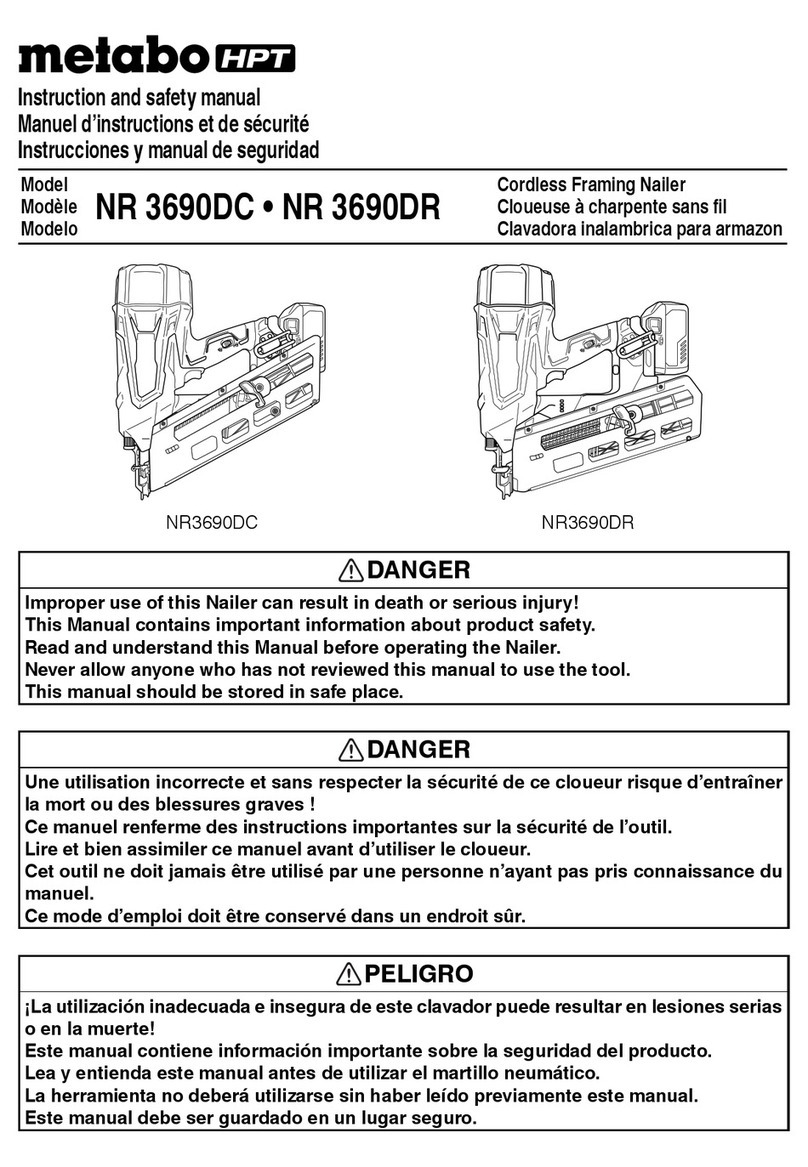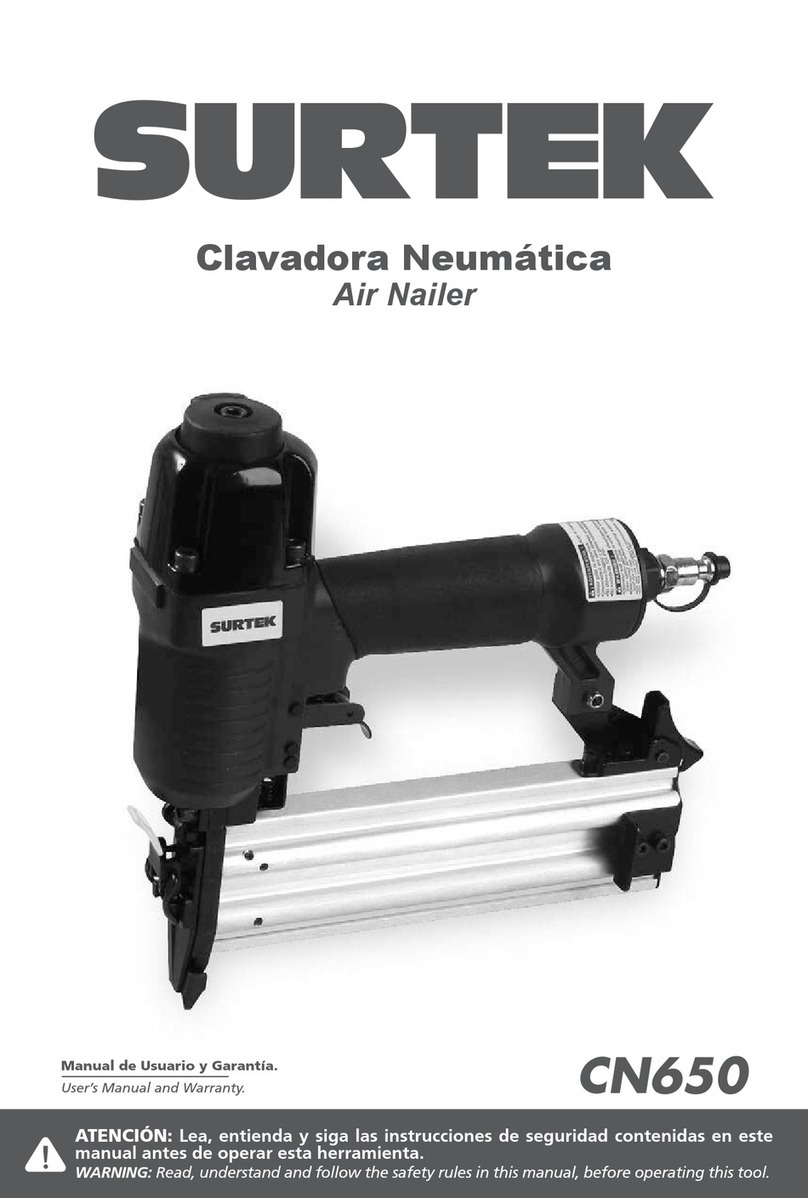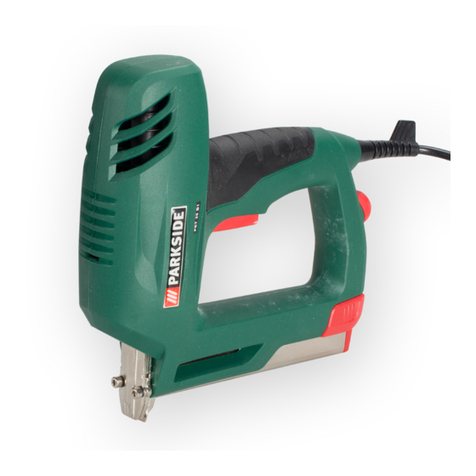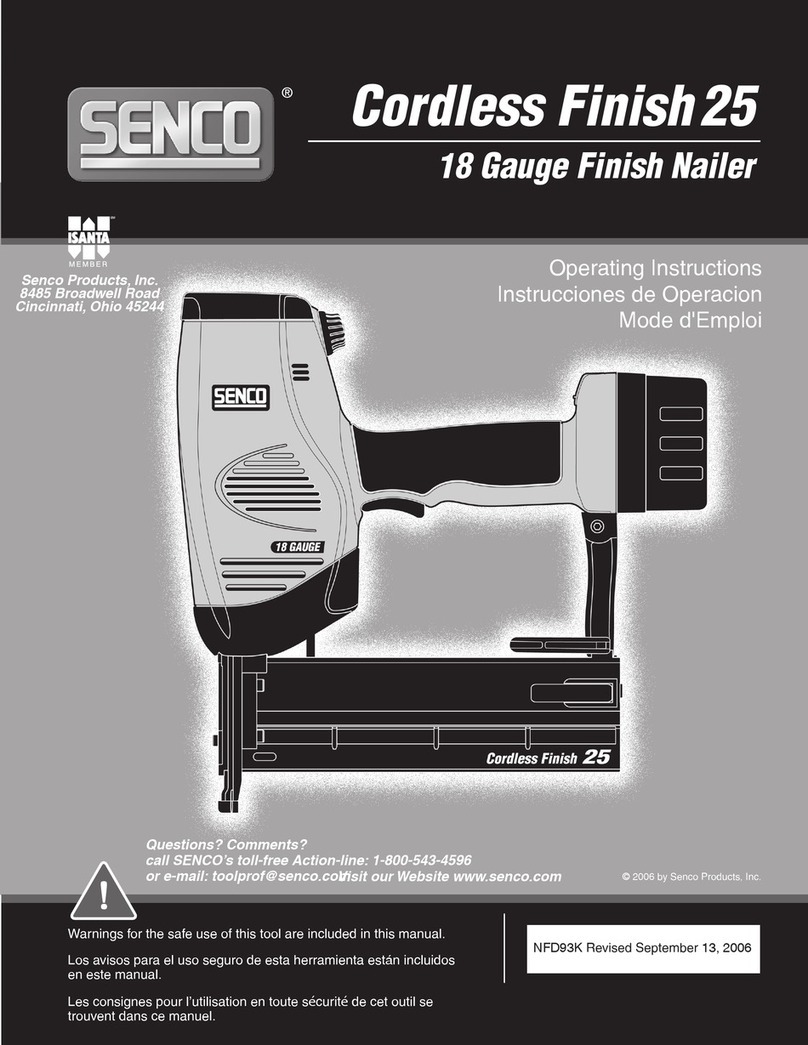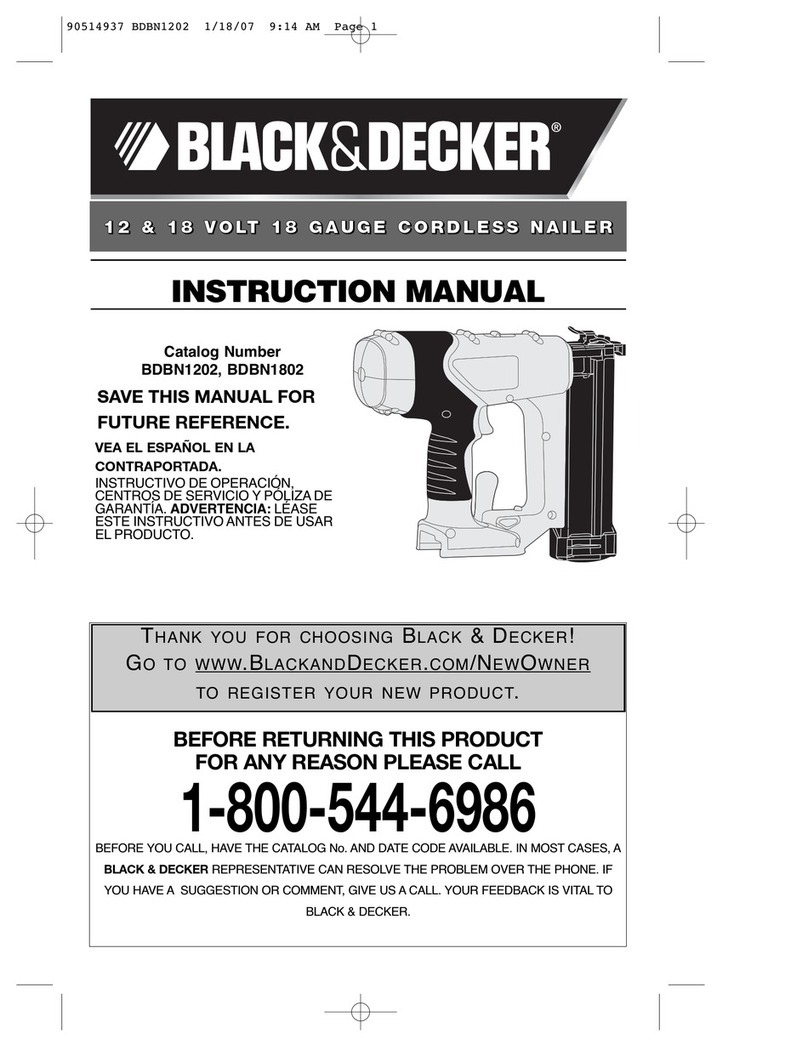
CONTENTS
TABLE DE MATIERES
INDICE
Français
Page
AVANT L’UTILISATION .........................................................27
ENVIRONNEMENT DE TRAVAIL ....................................27
ALIMENTATION D’AIR ....................................................27
GRAISSAGE .....................................................................28
ENTRETIEN PAR TEMPS FROID .....................................28
ESSAI DU CLOUEUR .......................................................28
RÉGLAGE DE LA PRESSION D’AIR ................................29
CHARGEMENT DES CLOUS ...........................................29
UTILISATION DU CLOUEUR ................................................31
MÉTHODES D’UTILISATION ..........................................31
RÉGLAGE DE LA PROFONDEUR DE CLOUAGE ...........32
CHANGEMENT DU SENS D’ÉCHAPPEMENT ...............33
COUPE DE LA BANDE PAPIER .......................................33
UTILISATION DU CAPUCHON DE BEC .........................33
ENTRETIEN
ENTRETIEN ET INSPECTION ................................................34
ENTRETIEN ET REPARATIONS ............................................35
LISTE DES PIECES .................................................................54
Español
Página
ANTES DE LA OPERACIÓN ..................................................44
ENTORNO DE TRABAJO ................................................44
SUMINISTRO DE AIRE ....................................................44
LUBRICACIÓN .................................................................45
CUIDADOS PARA CLIMAS FRÍOS ..................................45
PRUEBA DEL CLAVADOR ...............................................45
AJUSTE DE LA PRESIÓN DE AIRE .................................46
CARGA DE CLAVOS ........................................................47
OPERACIÓN DEL CLAVADOR ..............................................48
MÉTODOS DE OPERACIÓN ............................................48
AJUSTE DE LA PROFUNDIDAD DE CLAVADO .............49
CAMBIO DEL SENTIDO DEL AIRE DE ESCAPE .............50
CORTE DE LA CINTA .......................................................50
UTILIZACIÓN DE LA TAPA PARA EL MORRO...............50
MANTENIMIENTO
MANTENIMIENTO E INSPECCIÓN ......................................51
SERVICIO Y REPARACIONES ...............................................52
LISTA DE PIEZAS ..................................................................54
English
Page
BEFORE OPERATION ............................................................10
WORKING ENVIRONMENT ............................................10
AIR SUPPLY .....................................................................10
LUBRICATION ..................................................................11
COLD WEATHER CARE ...................................................11
TESTING THE NAILER.....................................................11
ADJUSTING AIR PRESSURE ..........................................12
LOADING NAILS ..............................................................12
NAILER OPERATION .............................................................14
METHODS OF OPERATION ............................................14
ADJUSTING THE NAILING DEPTH ................................15
CHANGING THE EXHAUST DIRECTION .......................15
CUTTING OFF THE SHEET .............................................15
USING THE NOSE CAP ...................................................16
MAINTENANCE
MAINTENANCE AND INSPECTION .....................................17
SERVICE AND REPAIRS ........................................................18
PARTS LIST ............................................................................54
Page
IMPORTANT INFORMATION ..................................................3
DEFINITIONS OF SIGNAL WORDS ....................................... 3
SAFETY
IMPORTANT SAFETY INSTRUCTIONS
FOR USING NAILERS ........................................................4
IMPORTANT SAFETY INSTRUCTIONS FOR USING
NV75AG COIL NAILER ......................................................6
EMPLOYER’S RESPONSIBILITIES ..........................................7
OPERATION
NAME OF PARTS ....................................................................8
SPECIFICATIONS .................................................................... 9
NAIL SELECTION .................................................................... 9
ACCESSORIES .........................................................................9
STANDARD ACCESSORIES ..............................................9
OPTIONAL ACCESSORIES .............................................10
APPLICATIONS ......................................................................10
Page
INFORMATION IMPORTANTE .............................................20
DEFINITION DES MOTS DE SIGNALISATION ....................20
SECURITE
CONSIGNES DE SECURITE IMPORTANTES
POUR L’UTILISATION DU CLOUEUR ............................21
IMPORTANTES INSTRUCTIONS DE SECURITE POUR
L’UTILISATION DU CLOUEUR NV75AG ........................24
RESPONSABILITES DE L’EMPLOYEUR ...............................24
UTILISATION
NOM DES PIECES .................................................................25
SPECIFICATIONS ...................................................................26
SELECTION DES CLOUS ......................................................26
ACCESSOIRES .......................................................................26
ACCESSOIRES STANDARD ............................................26
ACCESSOIRES EN OPTION ............................................27
APPLICATIONS ......................................................................27
Página
INFORMACIÓN IMPORTANTE .............................................37
DEFINICIÓN DE LAS PALABRAS CLAVE .............................37
SEGURIDAD
INSTRUCCIONES IMPORTANTES DE SEGURIDAD
PARA LA UTILIZACIÓN DEL CLAVADOR ......................38
INSTRUCCIONES IMPORTANTES DE SEGURIDAD
PARA UTILIZAR EL CLAVADOR DE RISTRA NV75AG ..41
RESPONSABILIDADES DEL EMPRESARIO .........................41
OPERACIÓN
NOMENCLATURA .................................................................42
ESPECIFICACIONES ..............................................................43
SELECCIÓN DE CLAVOS ......................................................43
ACCESORIOS .........................................................................43
ACCESORIOS ESTÁNDAR ..............................................43
ACCESORIOS OPCIONALES ..........................................44
APLICACIONES ......................................................................44



